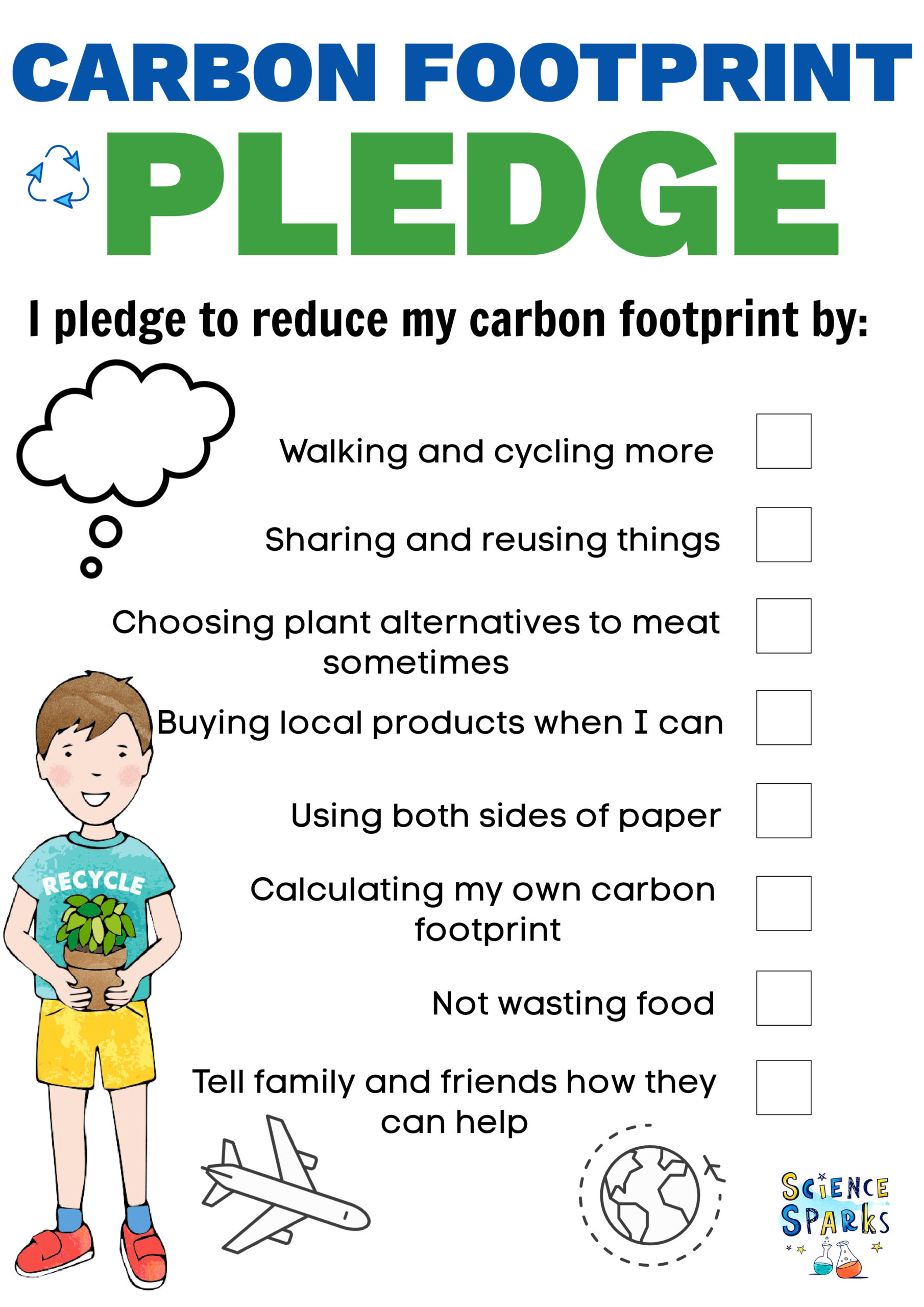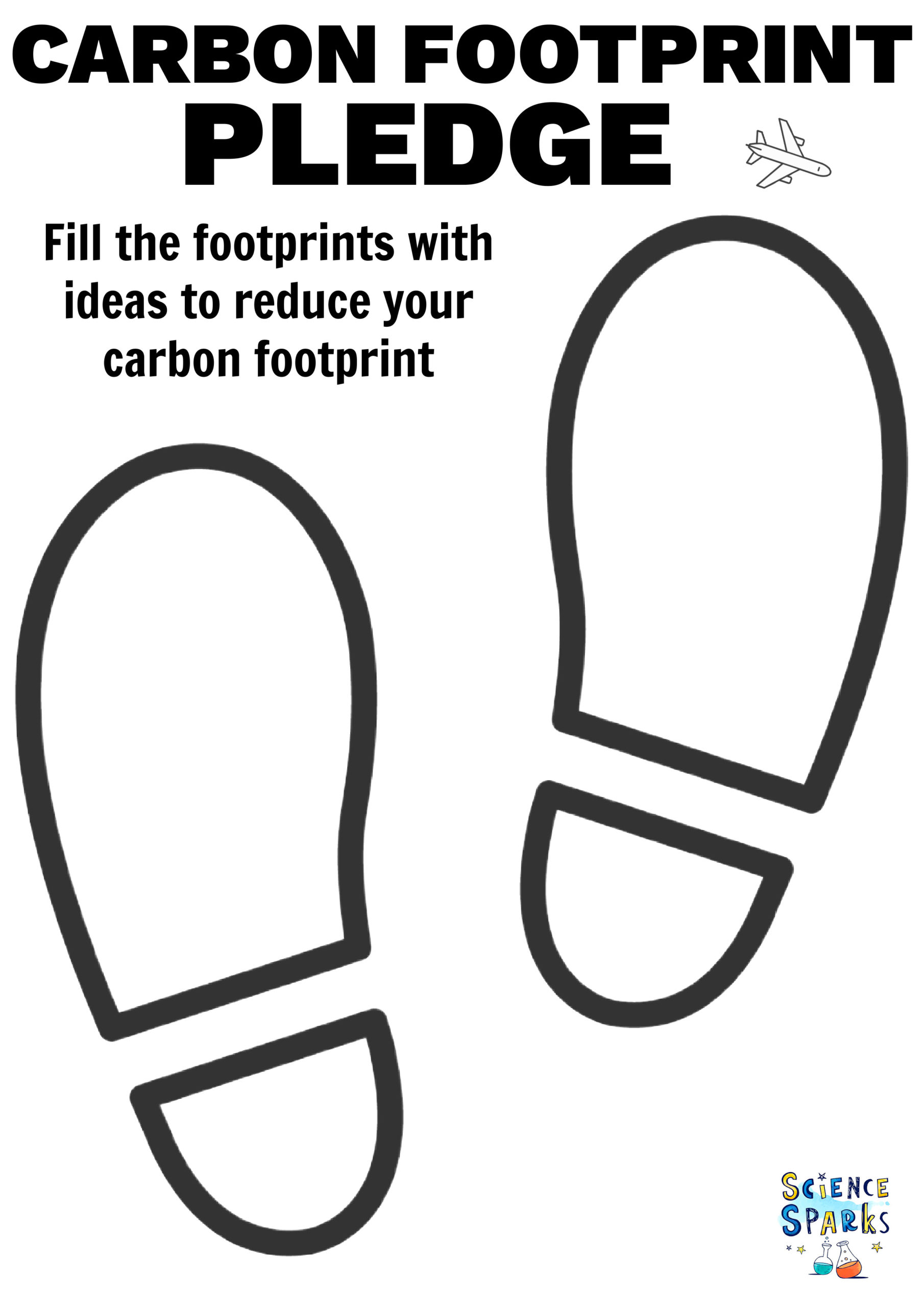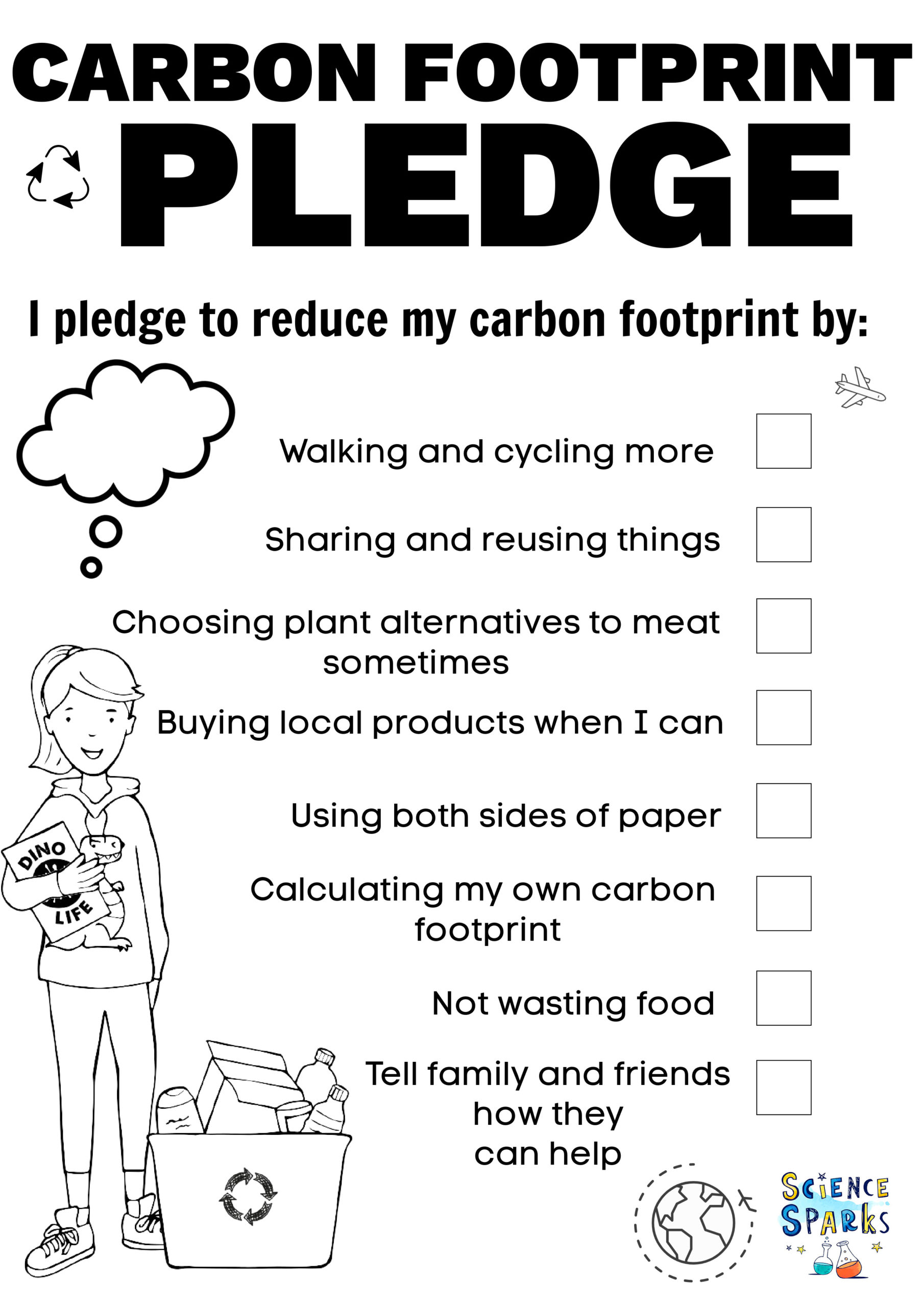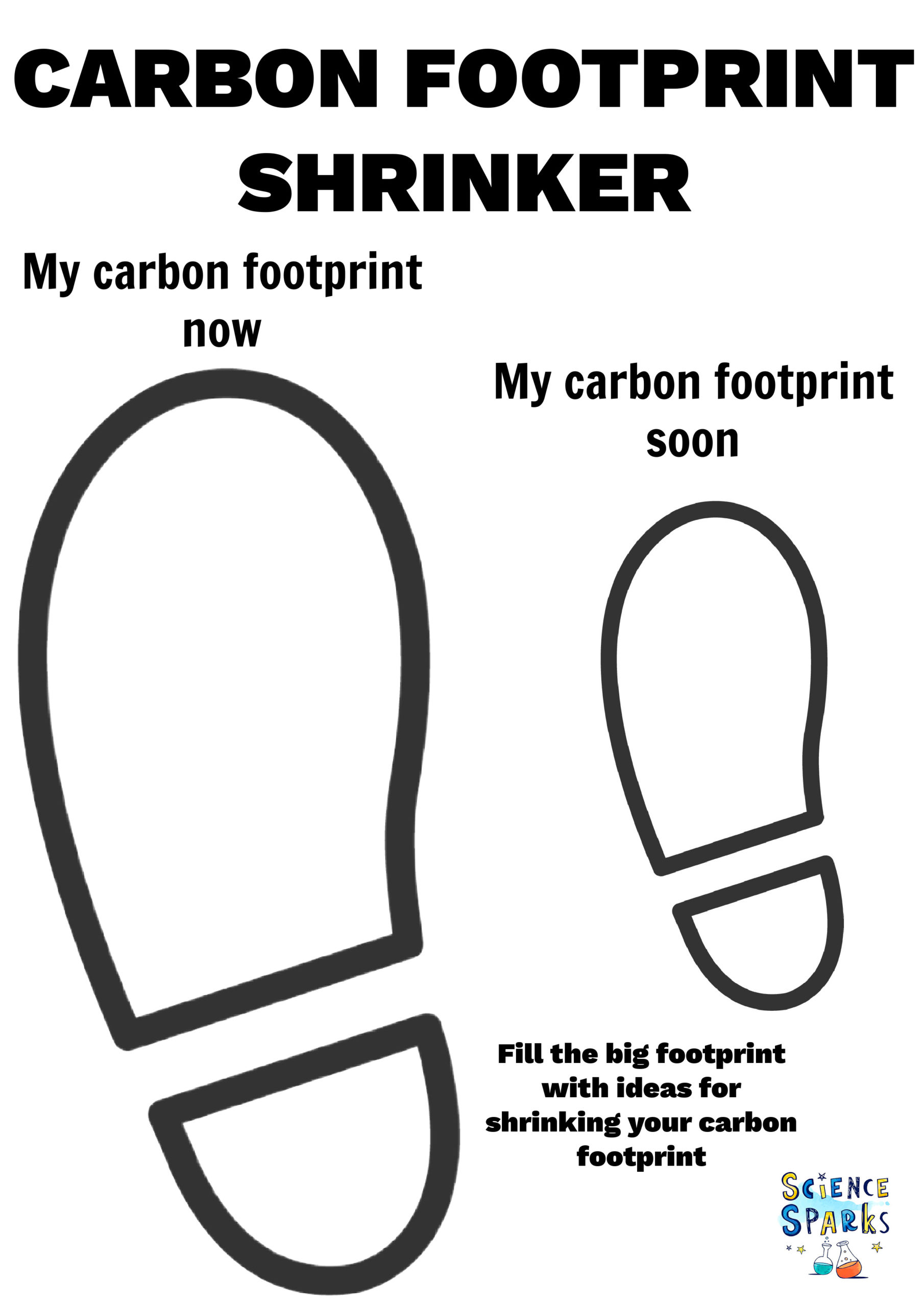What is a carbon footprint?
Your carbon footprint is the amount of carbon dioxide and methane gas released into the air as a result of your activities!
Every time you fly or take a journey in a car you add to your carbon footprint. The food you eat also adds to to it. Food that has been flown from a far away country has a much bigger carbon footprint than locally grown produce.
However, even local food has some carbon footprint attached as it still needs resources to grow and possibly machinery to be harvested.
When you cook food you add to your carbon footprint again as cooking requires energy.
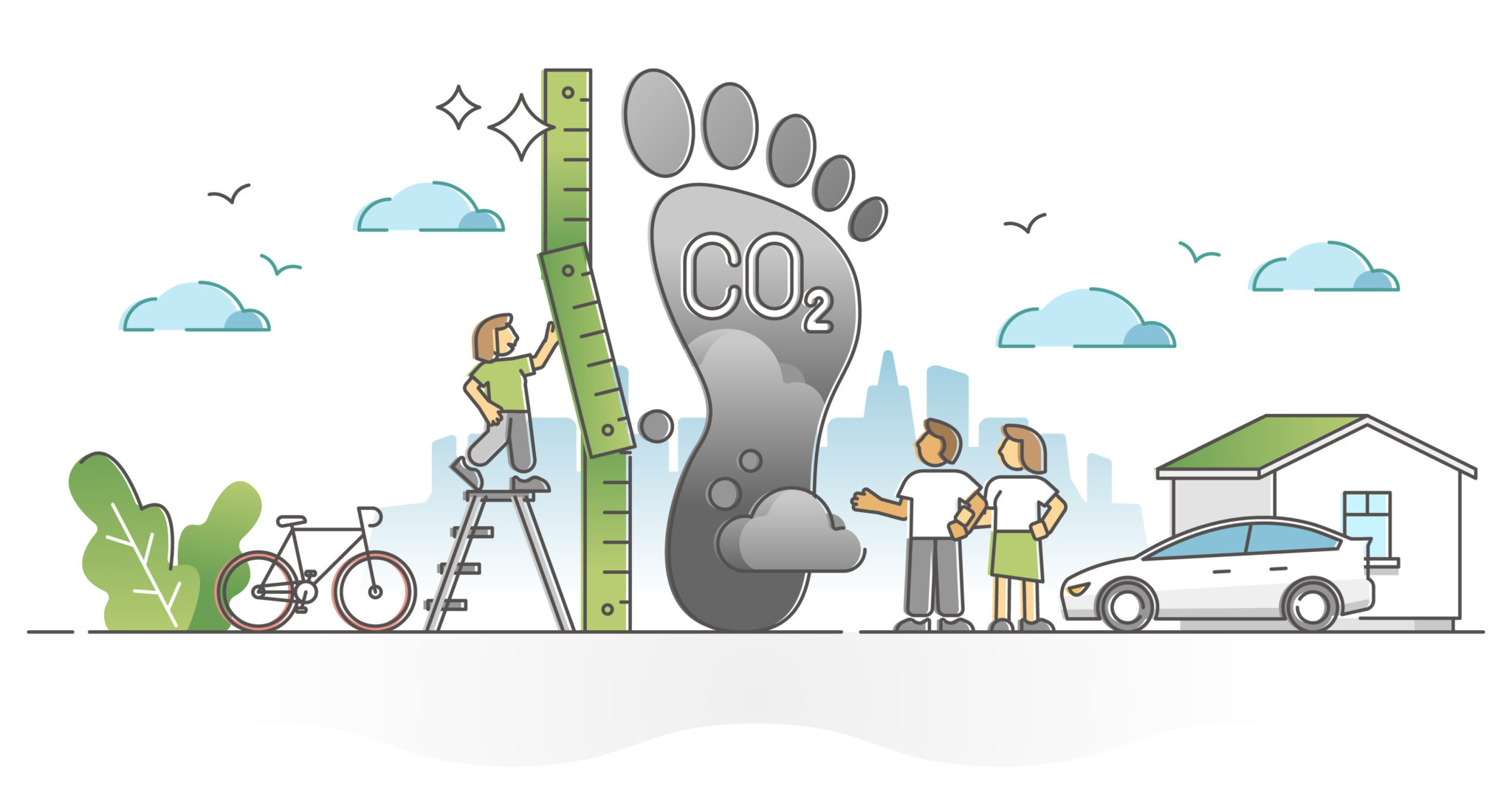
It’s hard to have a carbon footprint of zero as we all need to eat and travel, but there are ways to reduce your carbon footprint by making simple changes such as eating less meat, reducing waste or walking instead of taking the car for short journeys. You can also offset carbon emissions by contributing to projects that remove carbon from the atmosphere such as tree planting, but this isn’t always as simple as it sounds.
This handy tool from WWF lets you calculate your personal carbon footprint.
How to reduce your carbon footprint
Remember lots of small changes really do add up to a big overall change, so any action no matter how small is worth it!
Locally produced and organic food can be much more expensive than food with a bigger carbon footprint. We can all only do what we can, so choose the ideas that work best for you!
These free carbon footprint worksheets are great for helping think about which small changes you can make!
Ideas for reducing your carbon footprint
Use both sides of paper when writing or drawing.
Walk or cycle instead of taking the car.
Share car journeys when you can.
Buy locally produced food and other items where possible.
Share and re-use items as much as possible.
Fill an exercise book before getting a new one.
Turn off lights when you leave a room.
Shut down computers and televisions when they are not in use.
Eat more veggies! Meat and dairy production release more greenhouse gases than fruit, vegetables and beans.
Don’t waste food. Freeze leftovers, plan meals and buy in bulk where you can.
Use reusable shopping bags.
Avoid fast fashion – buy good quality clothes that will last a long time.
Check if your energy supplier uses green energy sources.
Check to see if your house is energy efficient.
Consider an electric or hybrid car.
Finally….
Tell your parents, friends and anyone who will listen about how to reduce their carbon footprint too!
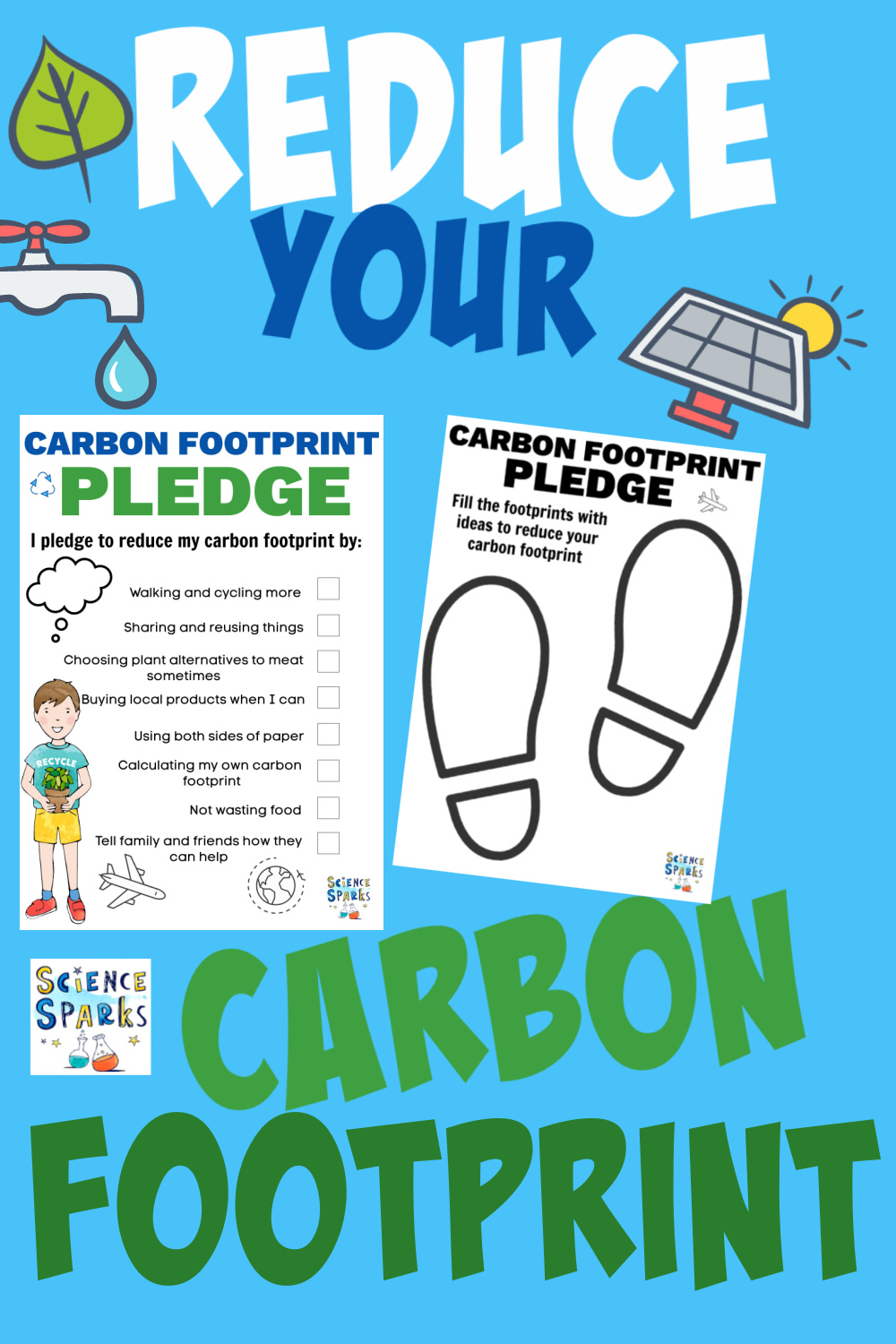
The post How to reduce your Carbon Footprint appeared first on Science Experiments for Kids.

